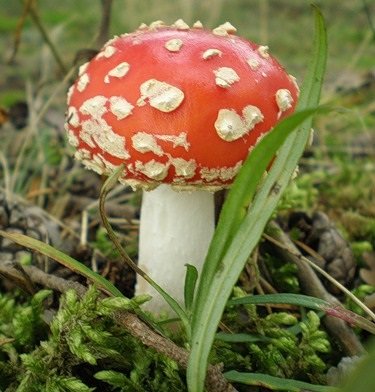Manidina agaric
- Diviziona: Basidiomycota (Basidiomycetes)
- Fizarana: Agaricomycotina (Agaricomycetes)
- Kilasy: Agaricomycetes (Agaricomycetes)
- Kilasy: Agaricomycetidae (Agaricomycetes)
- Karazana: Agaricales (Agarika na Lamellar)
- Fianakaviana: Amanitaceae (Amanitaceae)
- Genus: Amanita (Amanita)
- Type: Amanita muscaria (Amanita muscaria)
 Manidina agaric (Ny t. Manidina agaric) – a poisonous psychoactive mushroom of the genus Amanita, or Amanita (lat. Amanita) of the order agaric (lat. Agaricales), belongs to basidiomycetes.
Manidina agaric (Ny t. Manidina agaric) – a poisonous psychoactive mushroom of the genus Amanita, or Amanita (lat. Amanita) of the order agaric (lat. Agaricales), belongs to basidiomycetes.
In many European languages, the name “fly agaric” came from the old way of using it – as a means against flies, the Latin specific epithet also comes from the word “fly” (Latin musca). In Slavic languages, the word “fly agaric” became the name of the genus Amanita.
Amanita muscaria grows in coniferous, deciduous and mixed forests, especially in birch forests. It occurs frequently and abundantly singly and in large groups from June to autumn frosts.
Hat up to 20 cm in ∅, first, then, bright red, orange-red, the surface is dotted with numerous white or slightly yellow warts. The color of the skin can be various shades from orange-red to bright red, brightening with age. In young mushrooms, flakes on the cap are rarely absent, in old ones they can be washed off by rain. The plates sometimes acquire a light yellow tint.
The flesh is yellowish under the skin, soft, odorless.
The plates are frequent, free, white, turning yellow in old mushrooms.
Spore powder is white. Spores ellipsoid, smooth.
Leg up to 20 cm long, 2,5-3,5 cm ∅, cylindrical, tuberous at the base, first dense, then hollow, white, glabrous, with a white or yellowish ring. The tuberous base of the leg is fused with the saccular sheath. The base of the leg is covered with white warts in several rows. The ring is white.
The mushroom is poisonous. Symptoms of poisoning appear after 20 minutes and up to 2 hours after ingestion. Contains a significant amount of muscarine and other alkaloids.
May be confused with golden red russula (Russula aurata).
Amanita muscaria was used as an intoxicant and entheogen in Siberia and had religious significance in the local culture.









